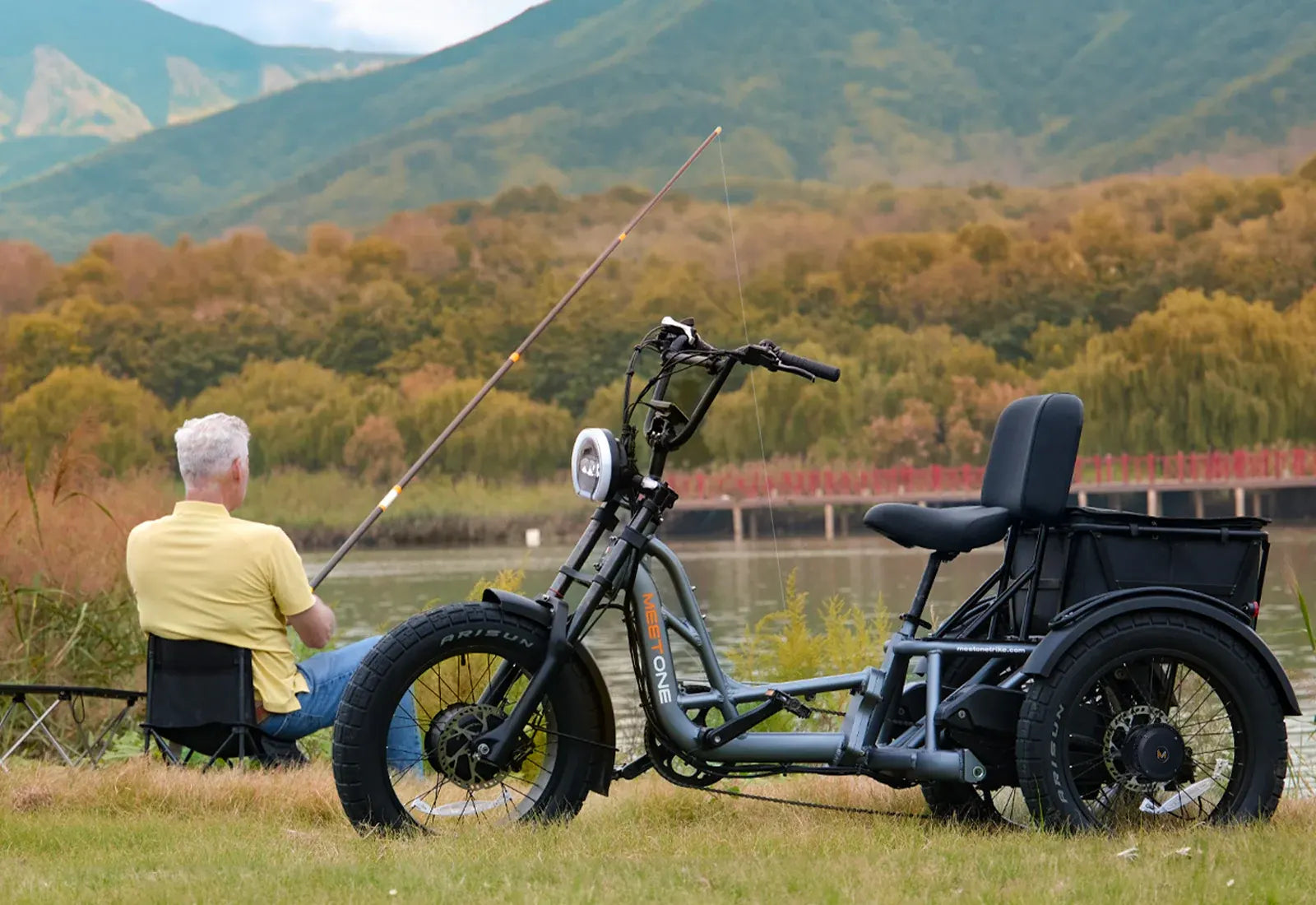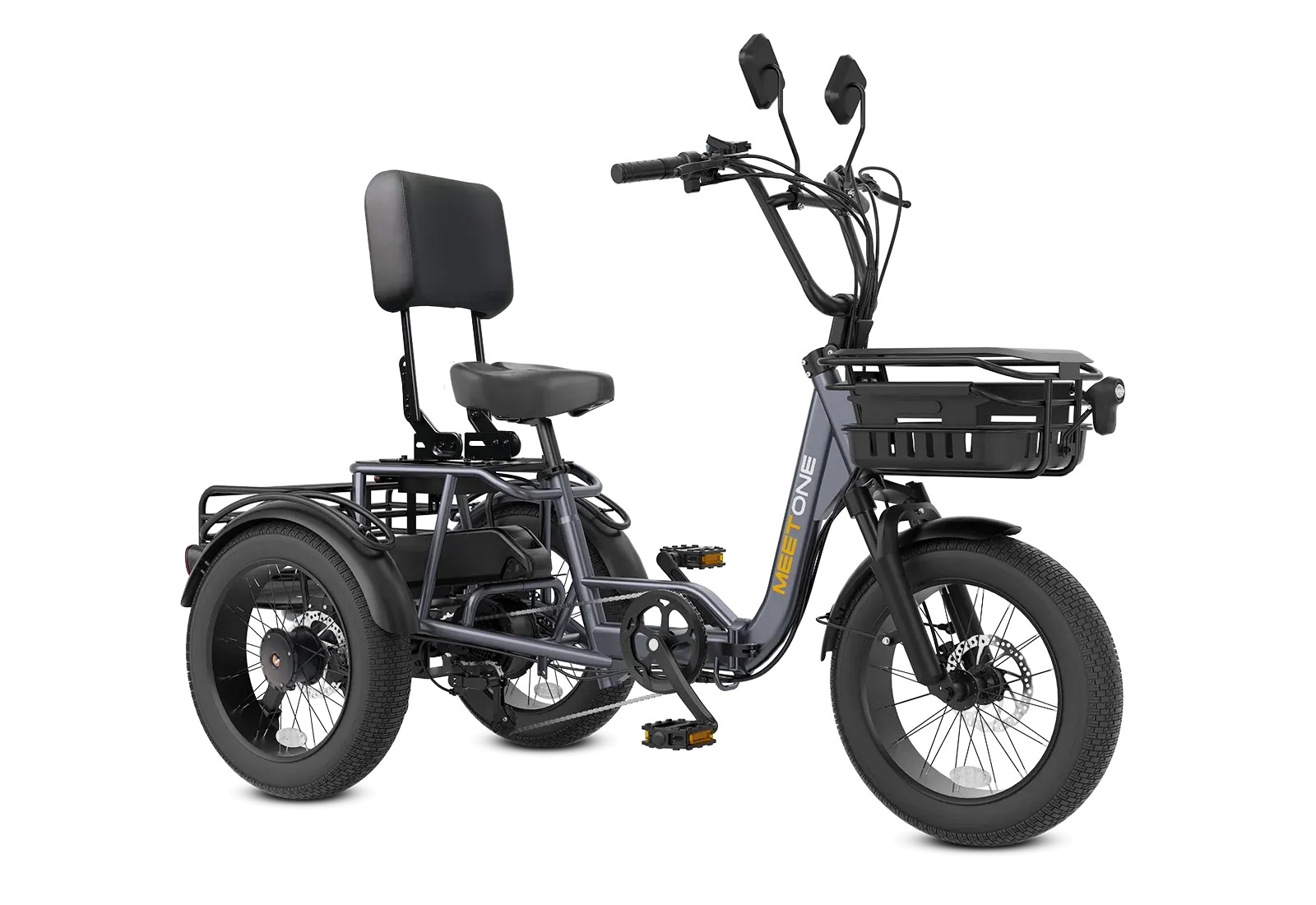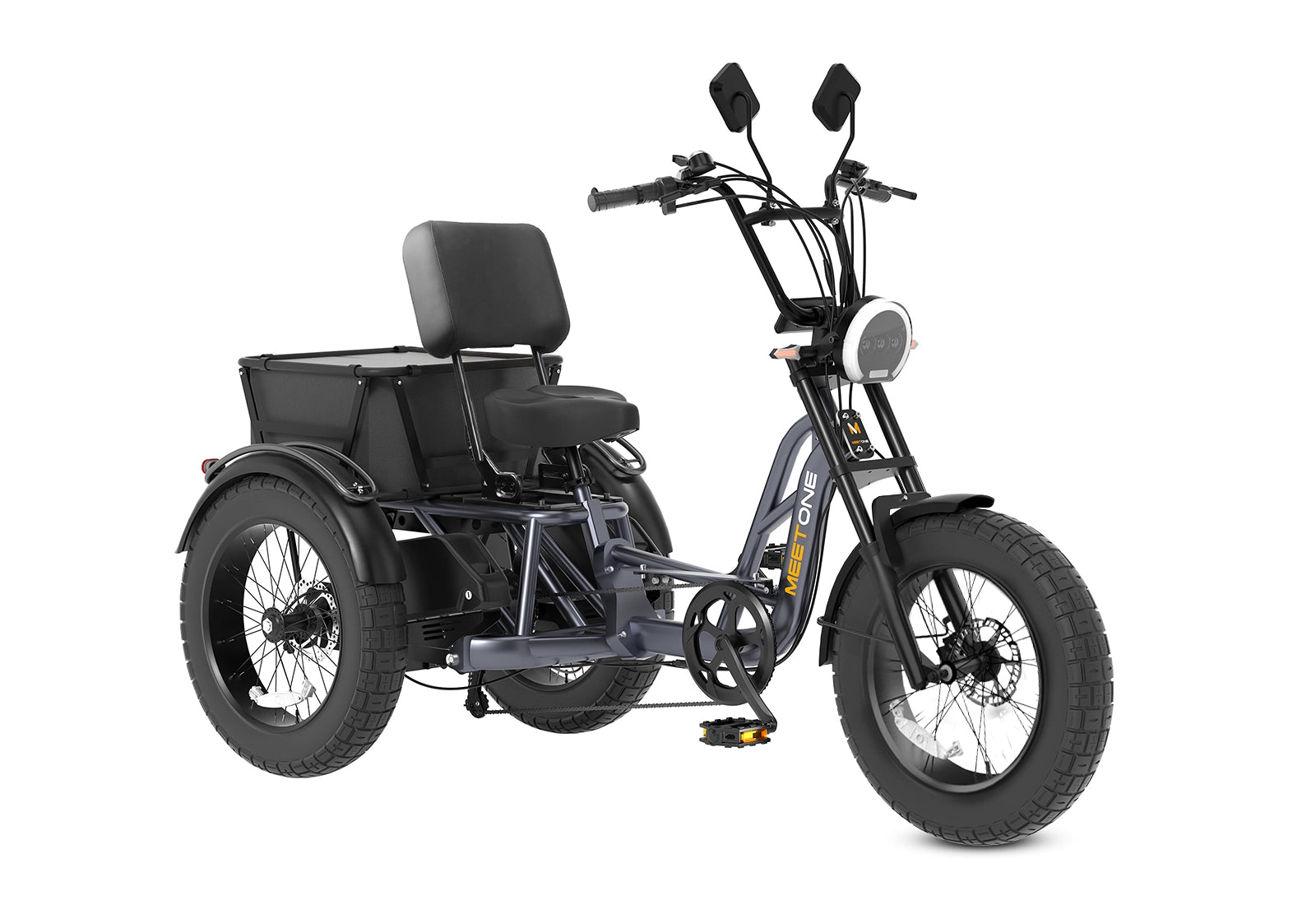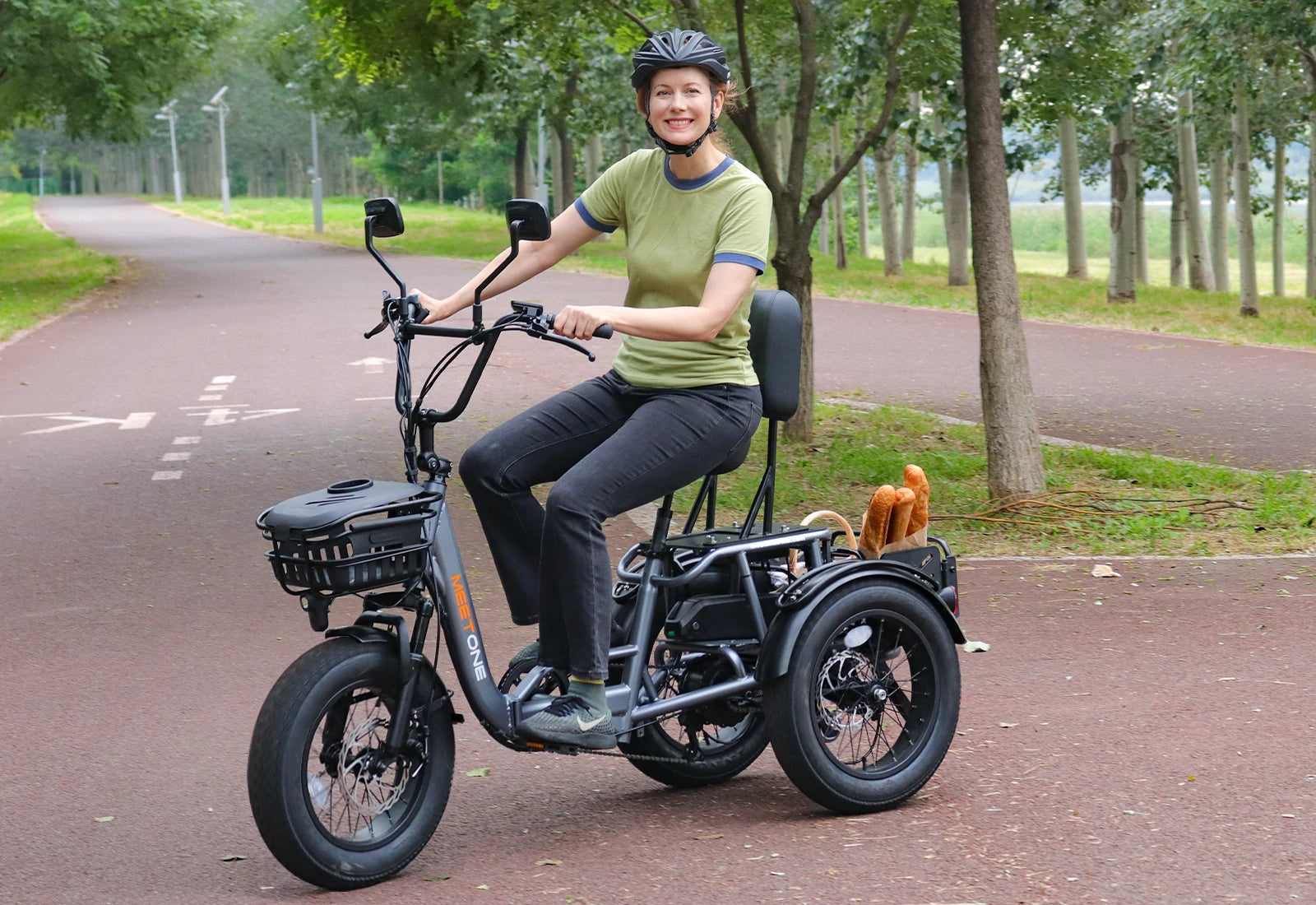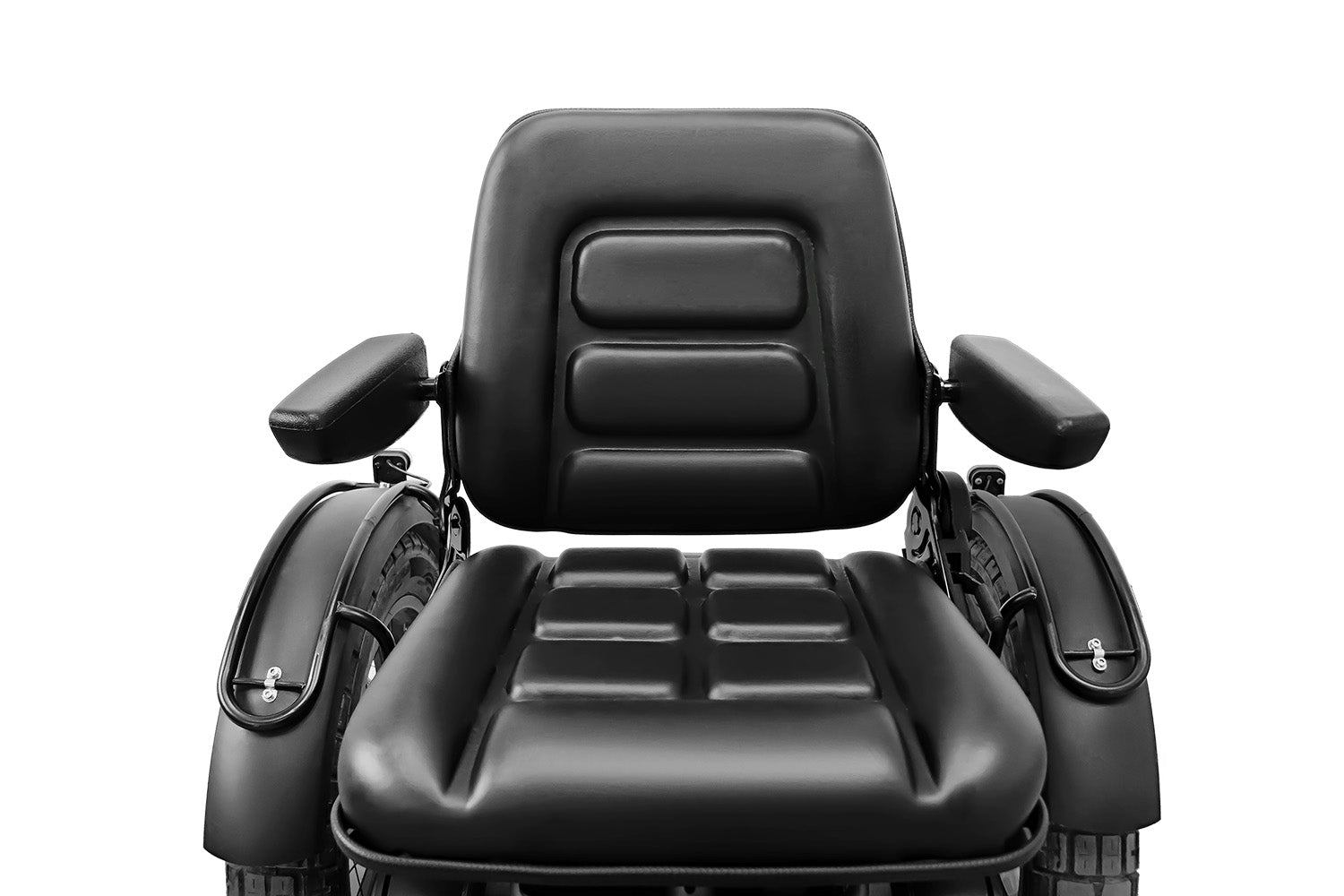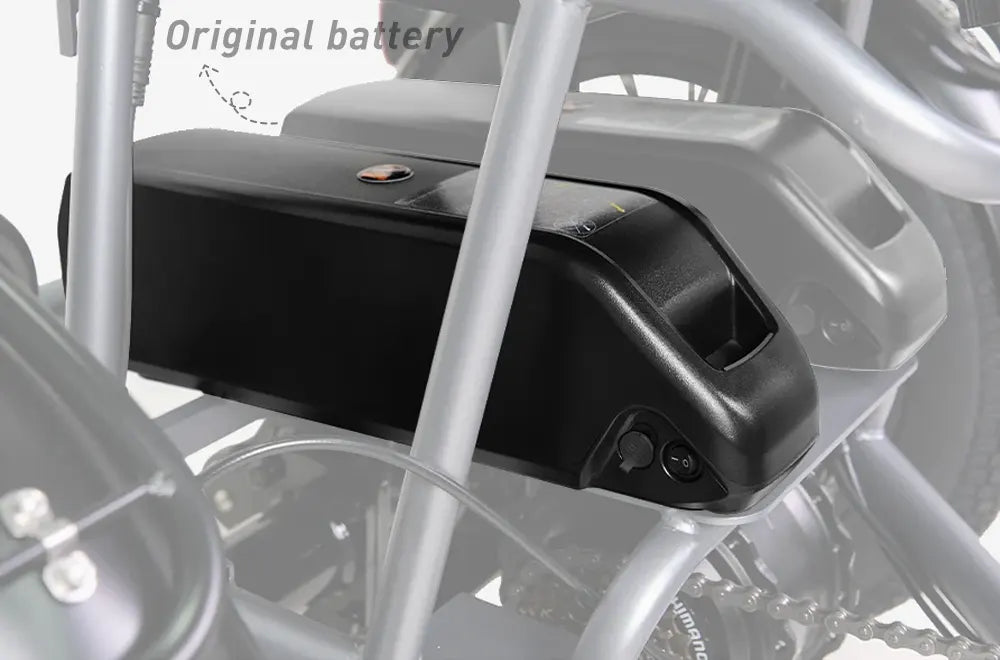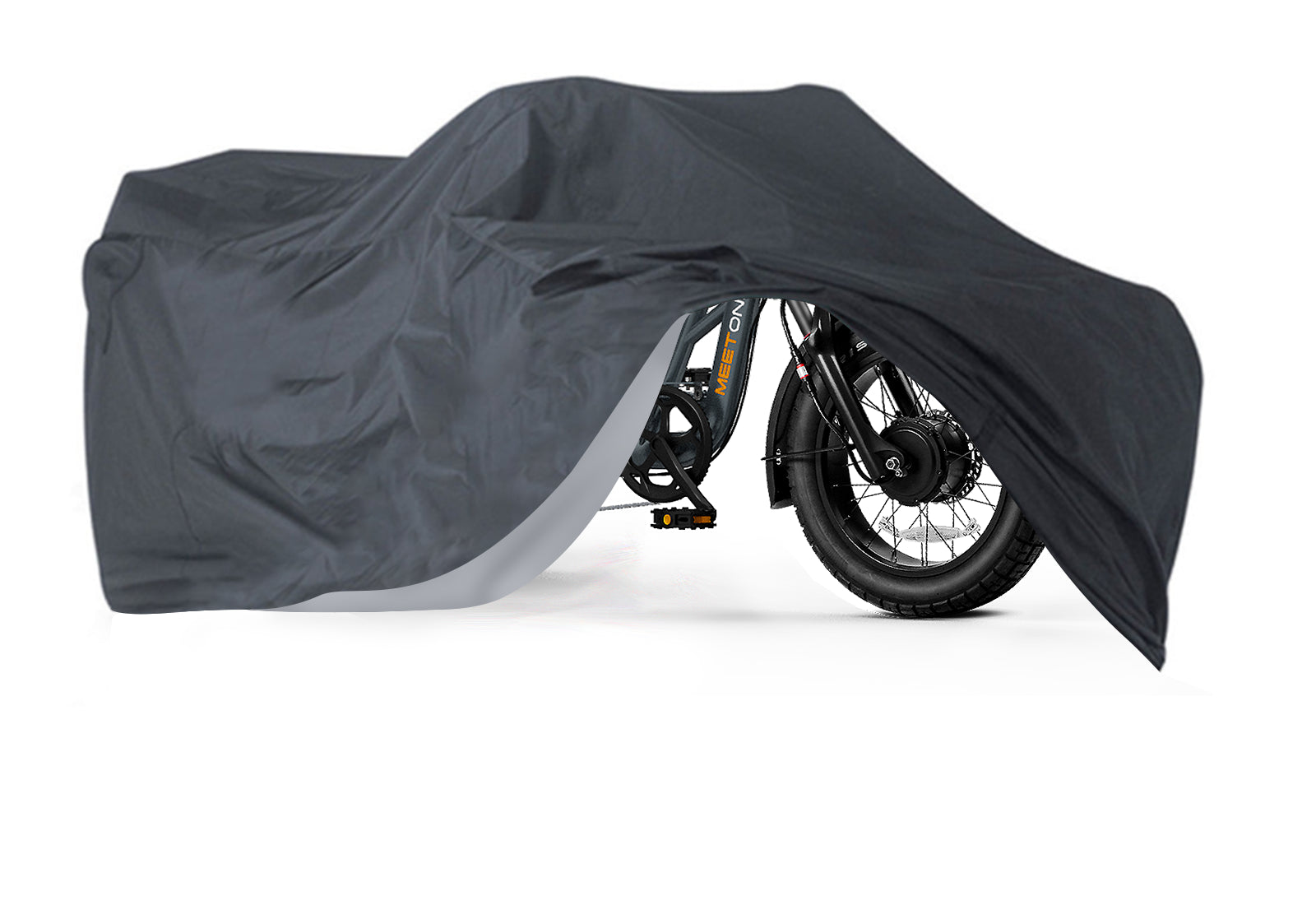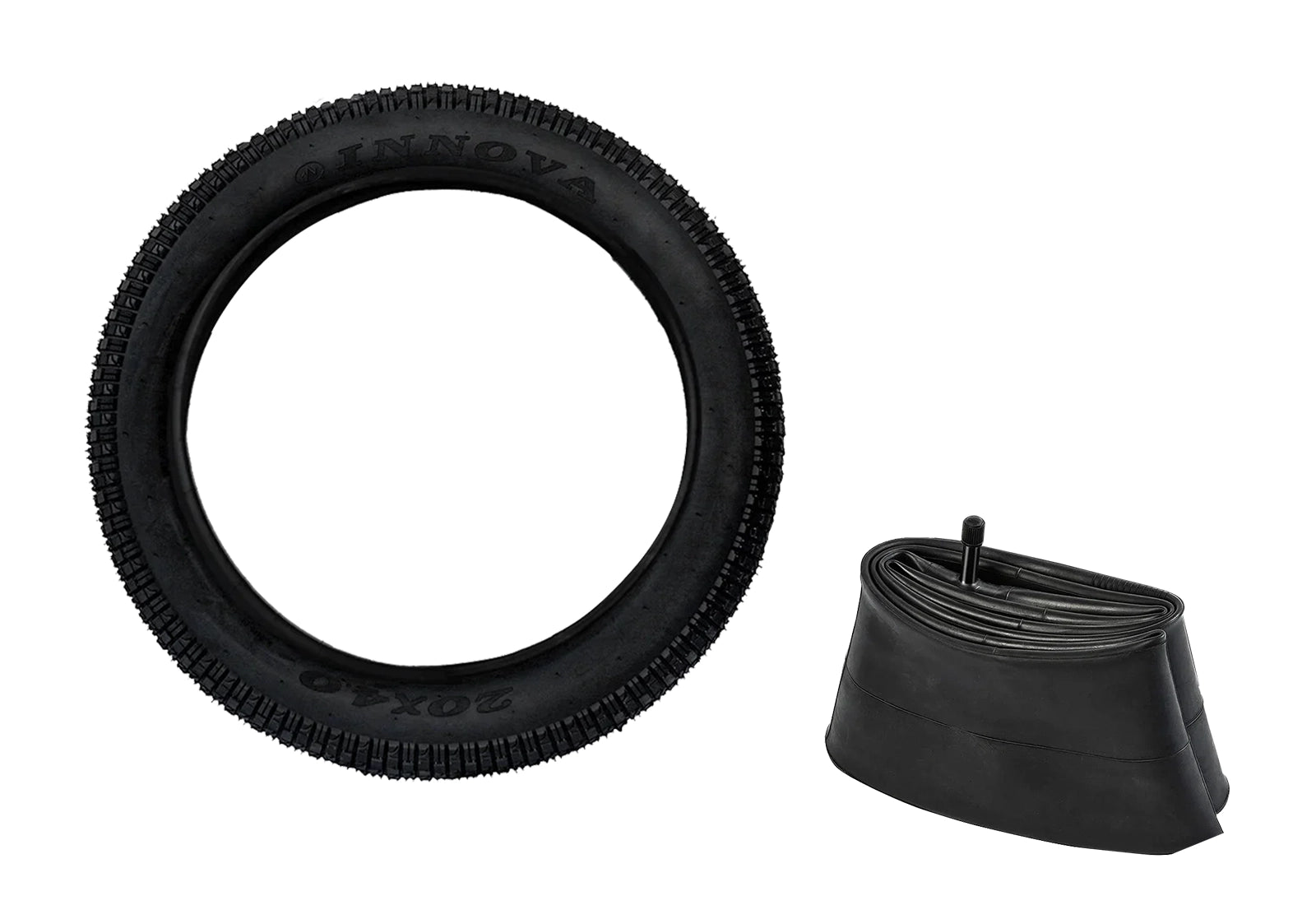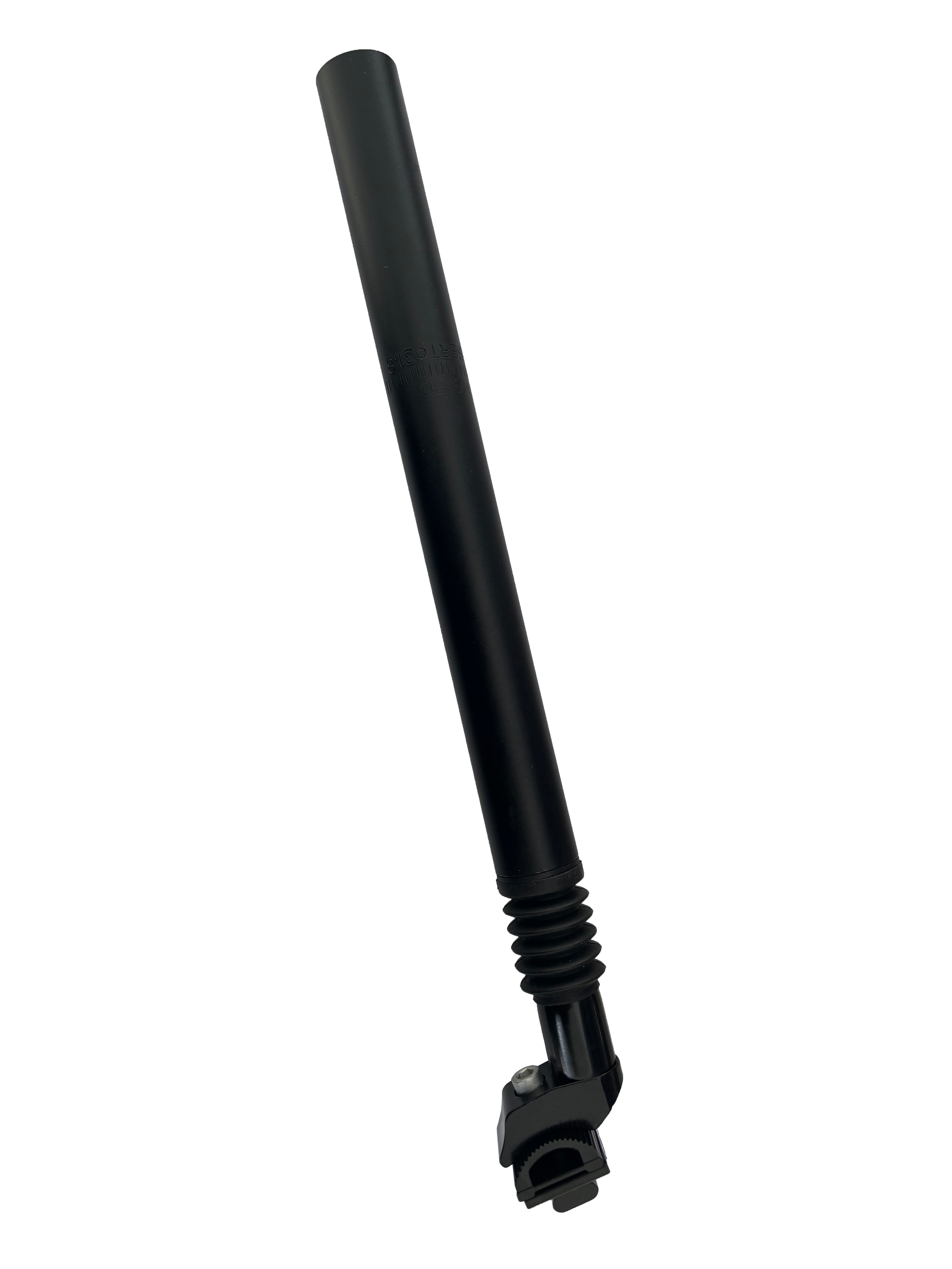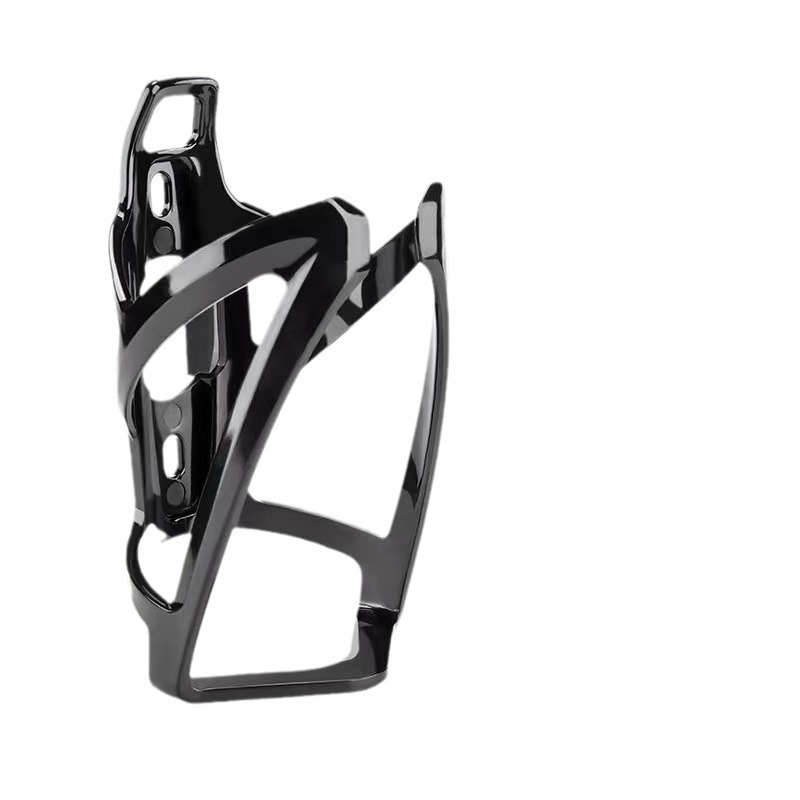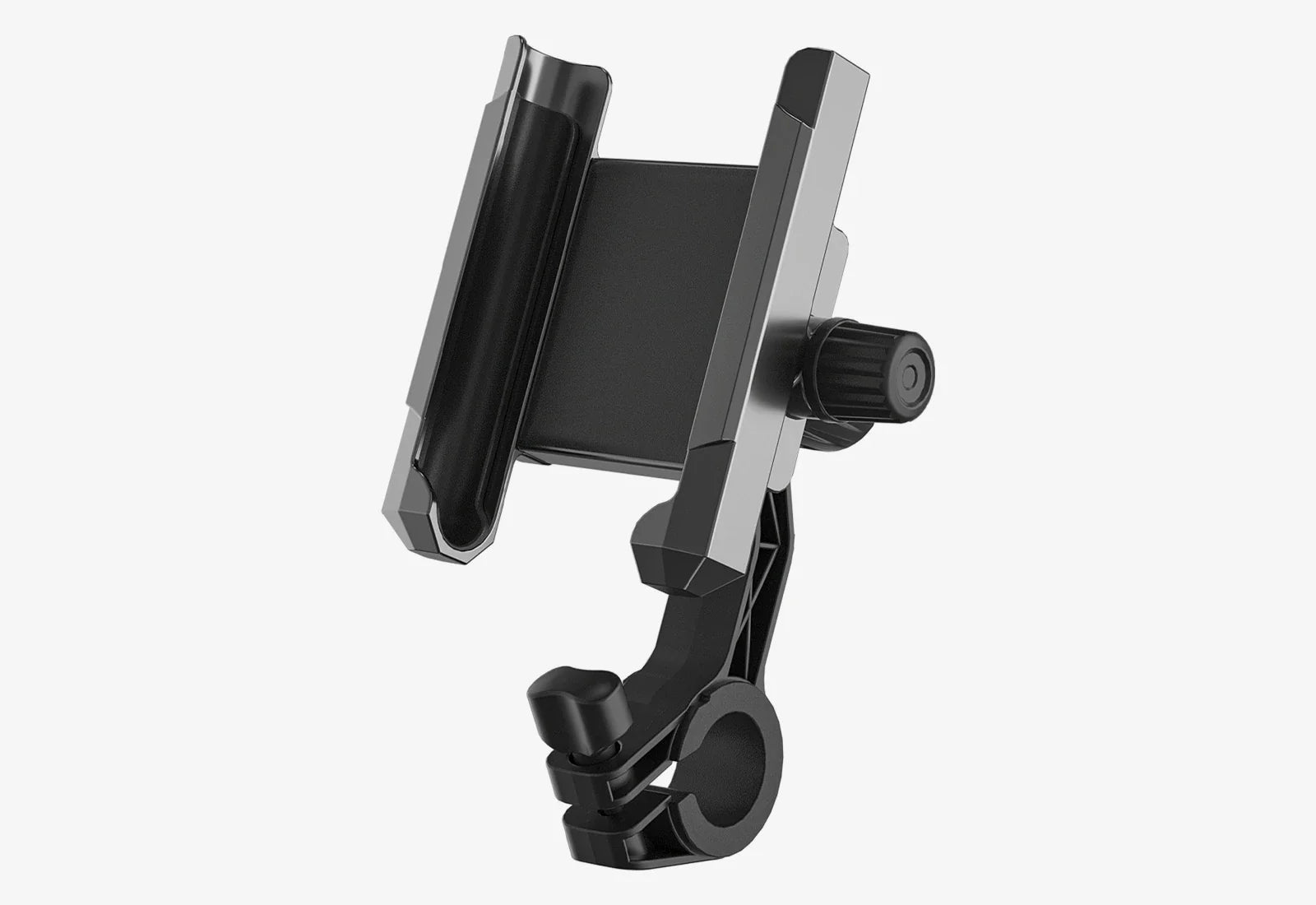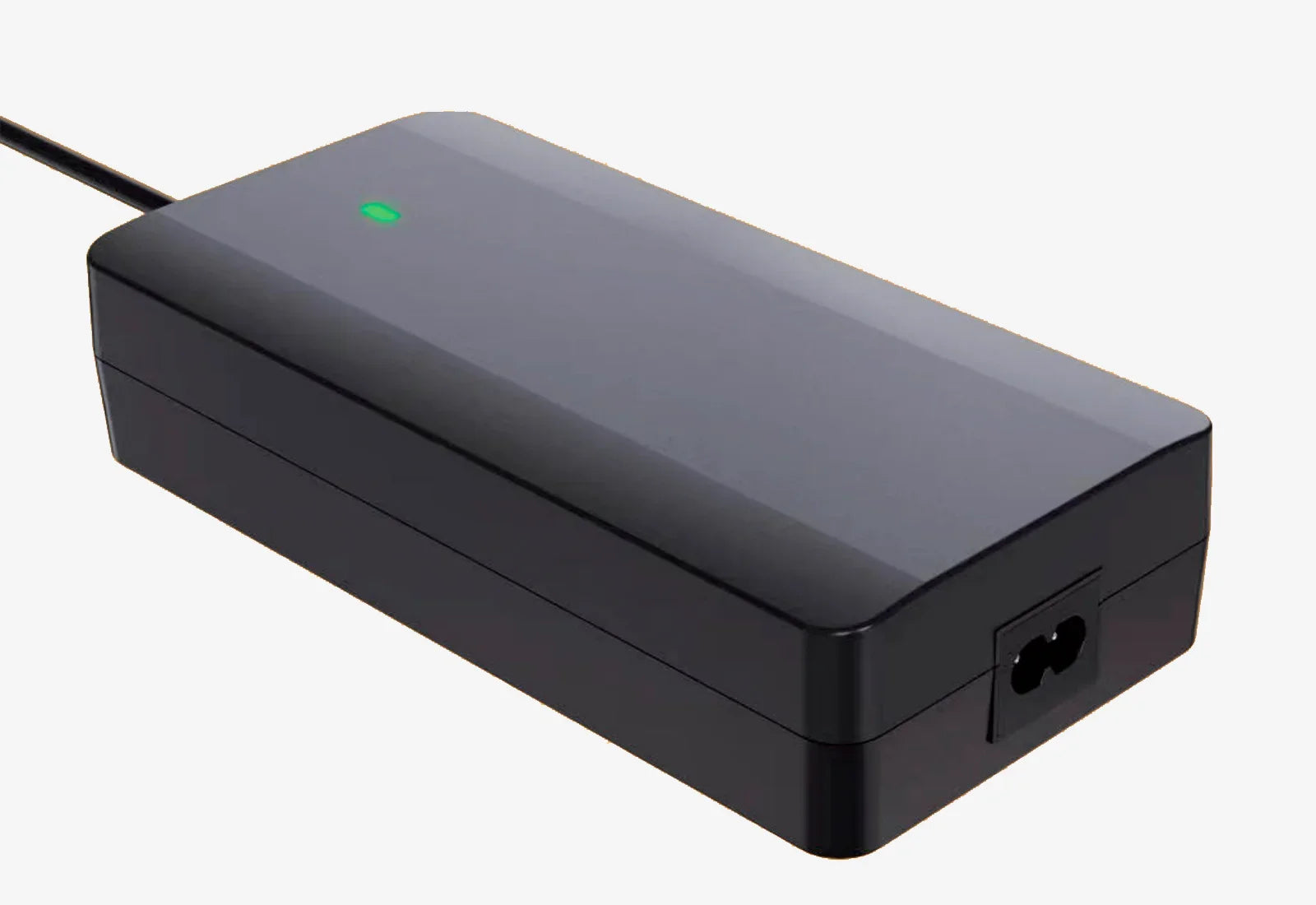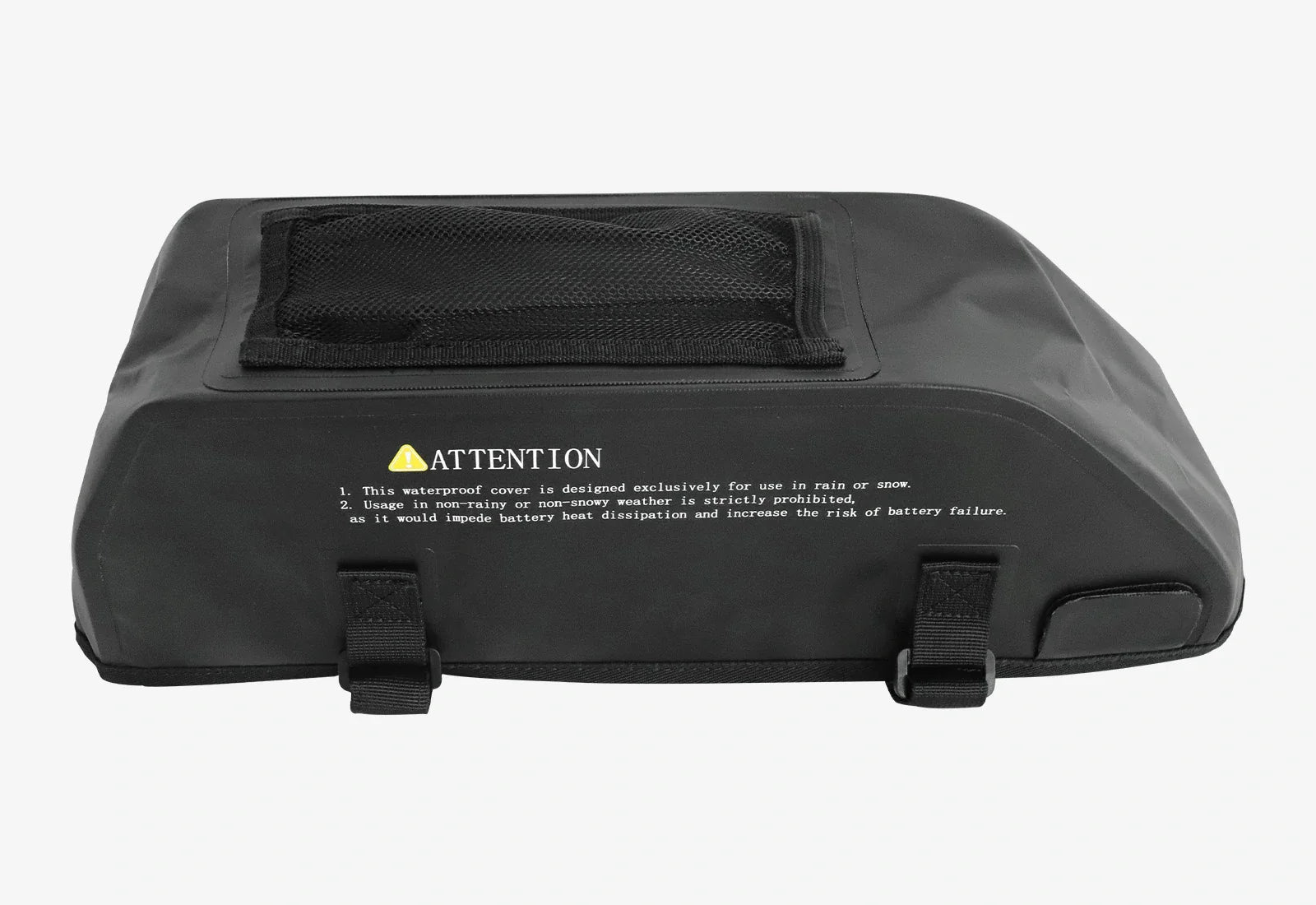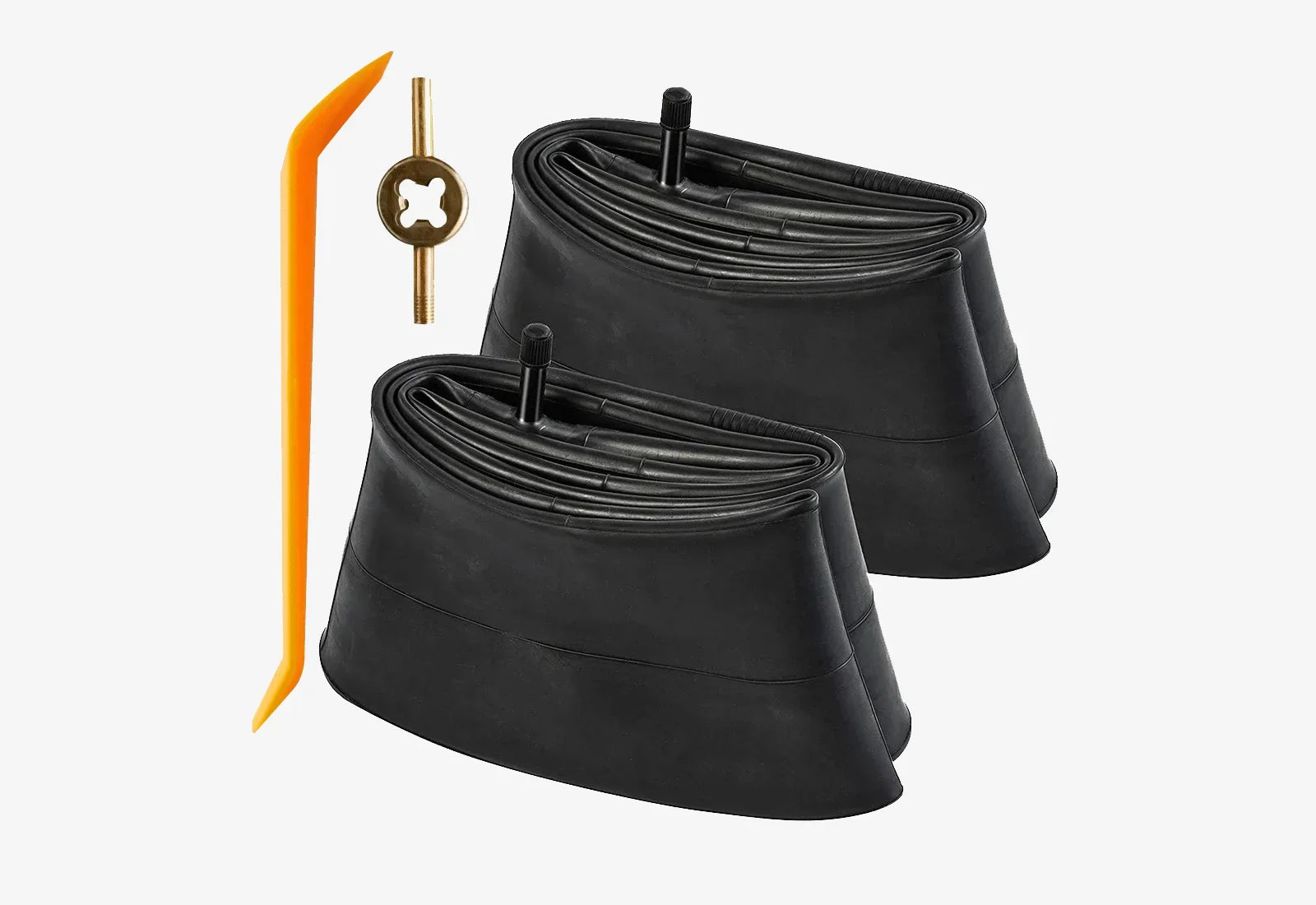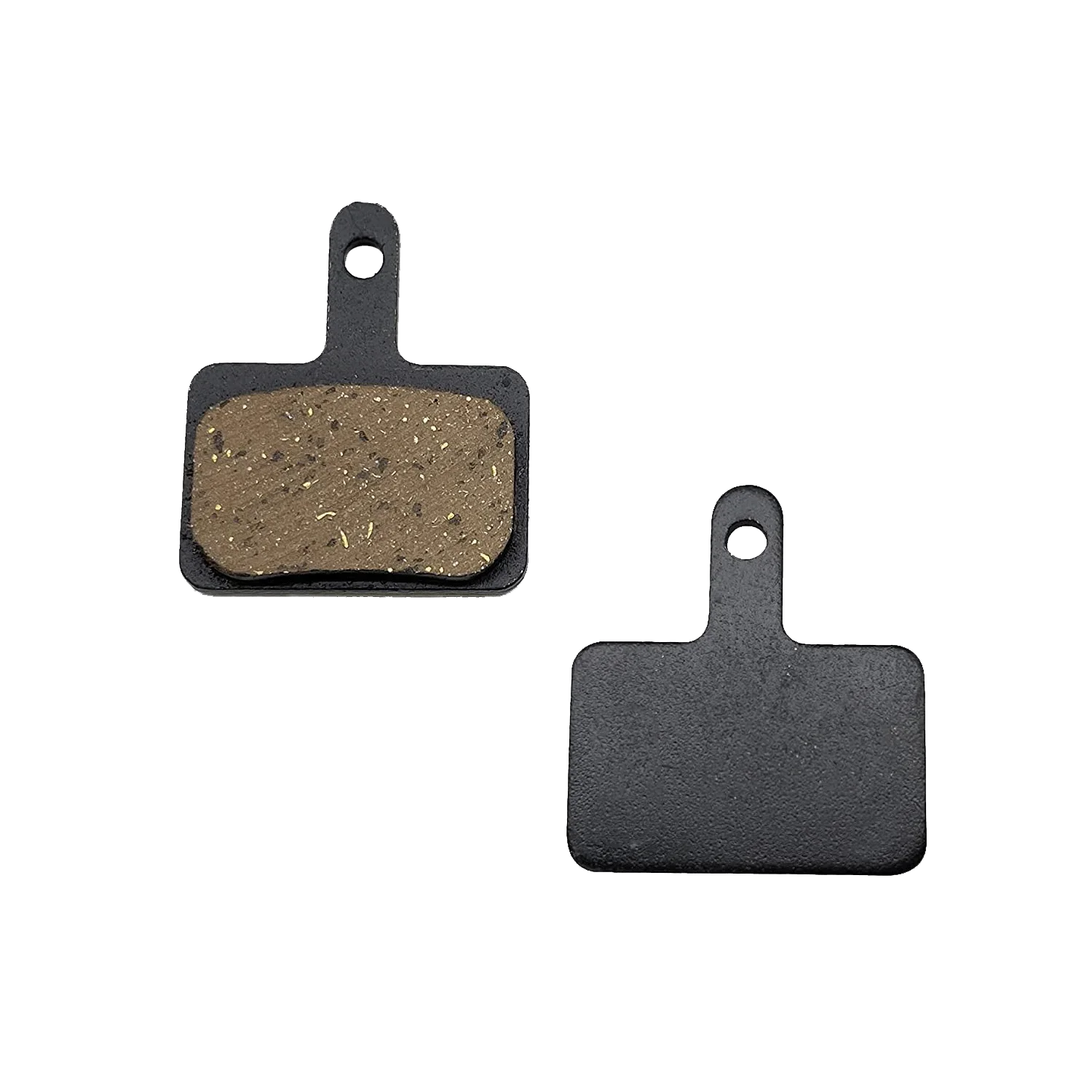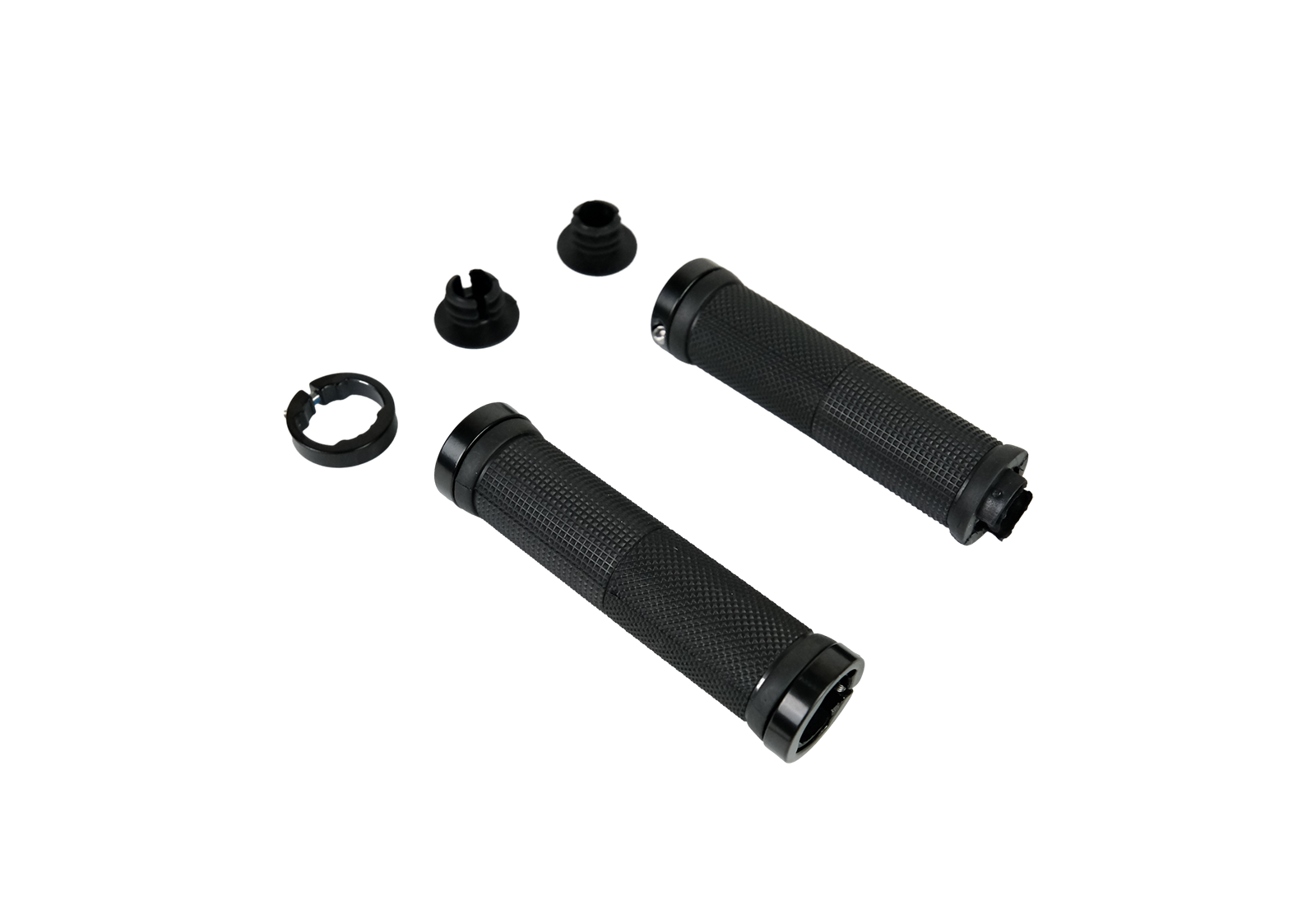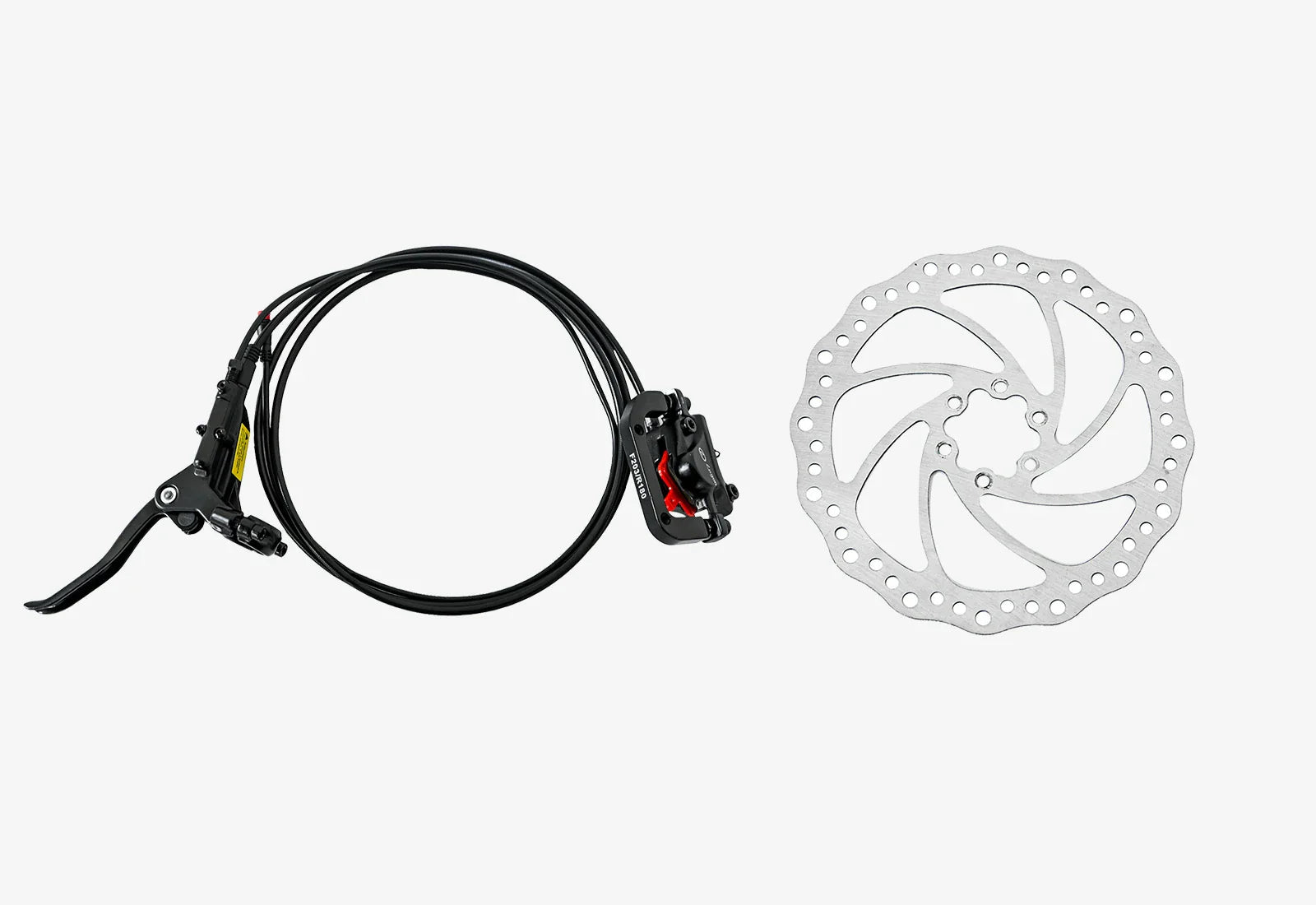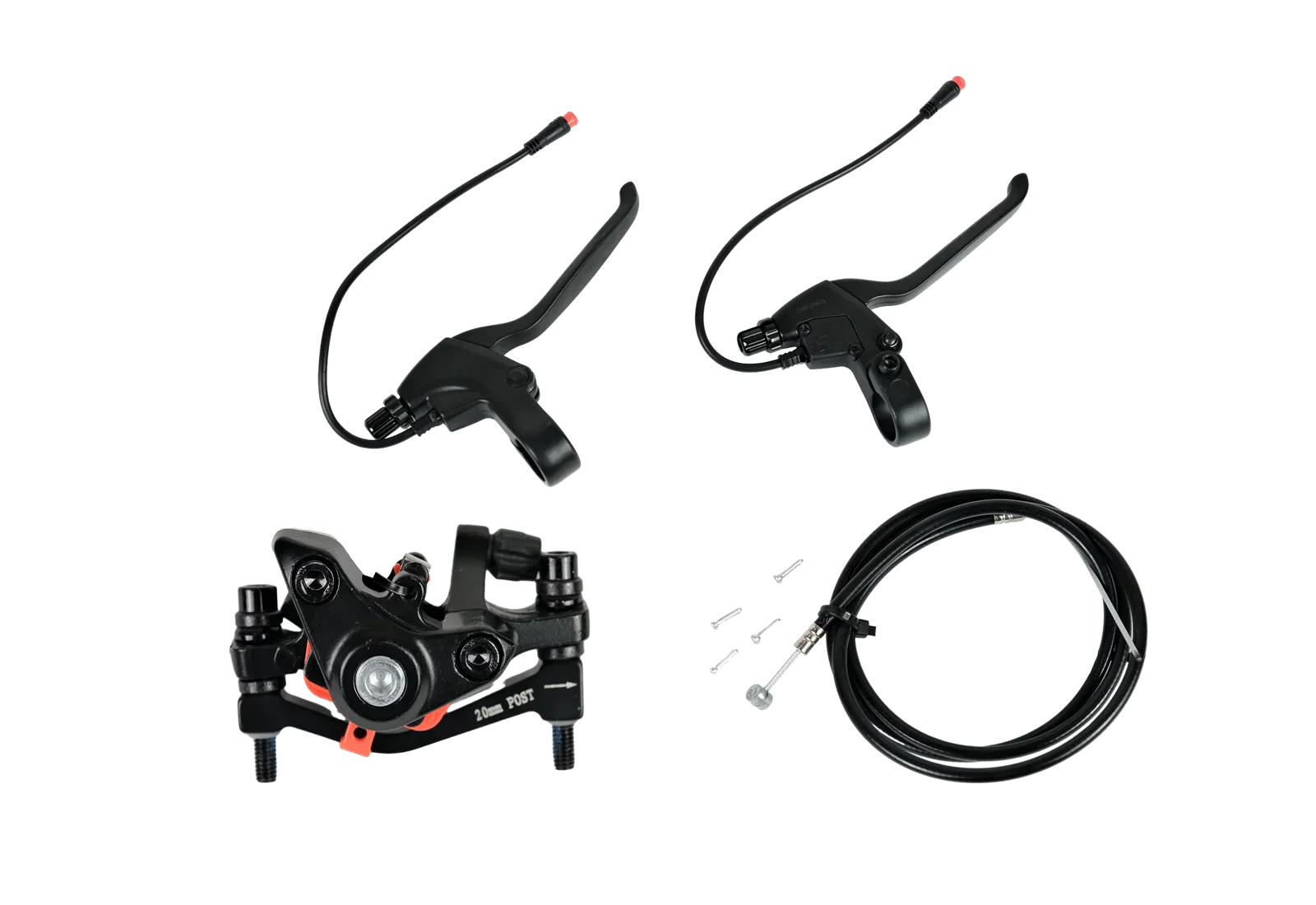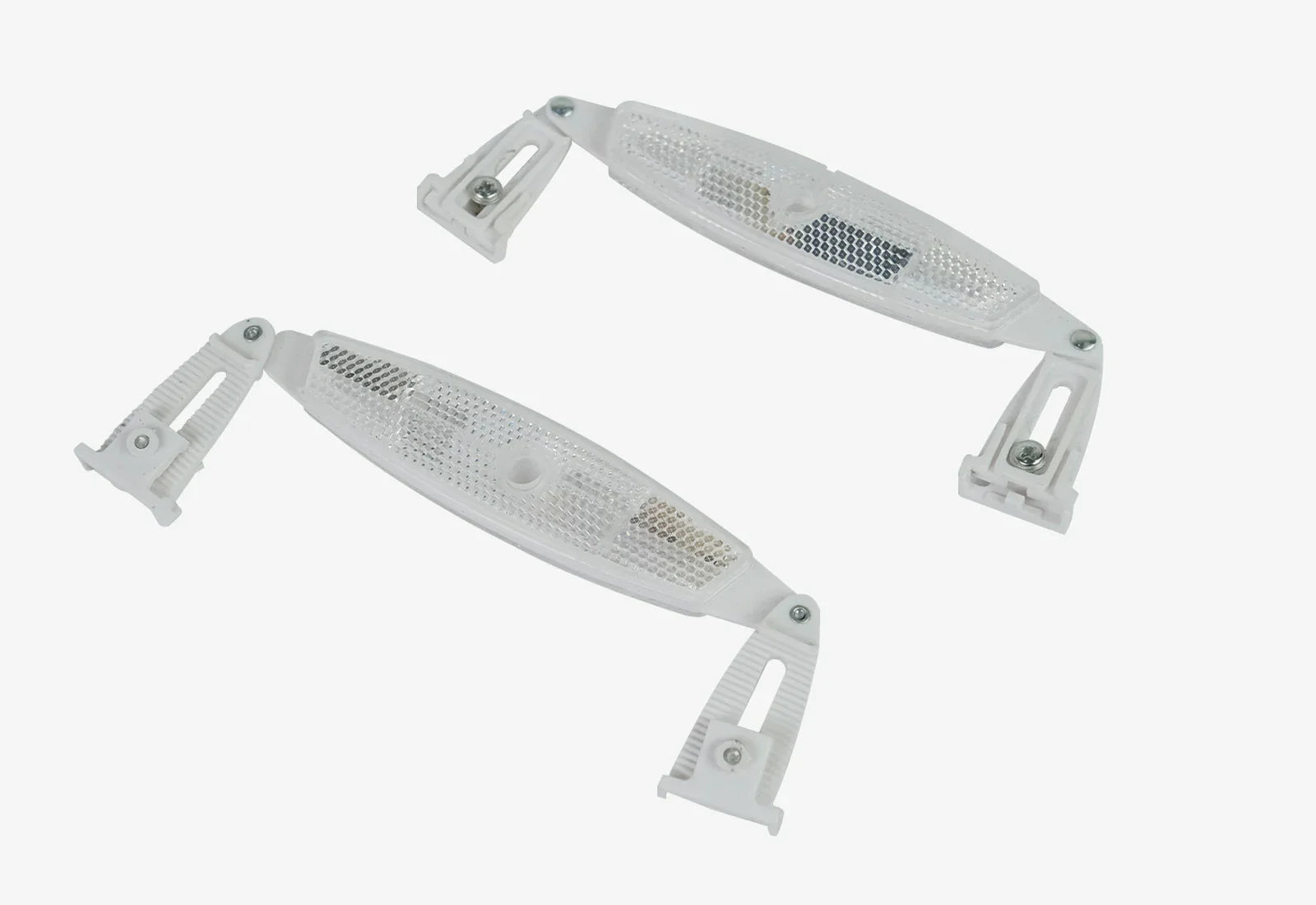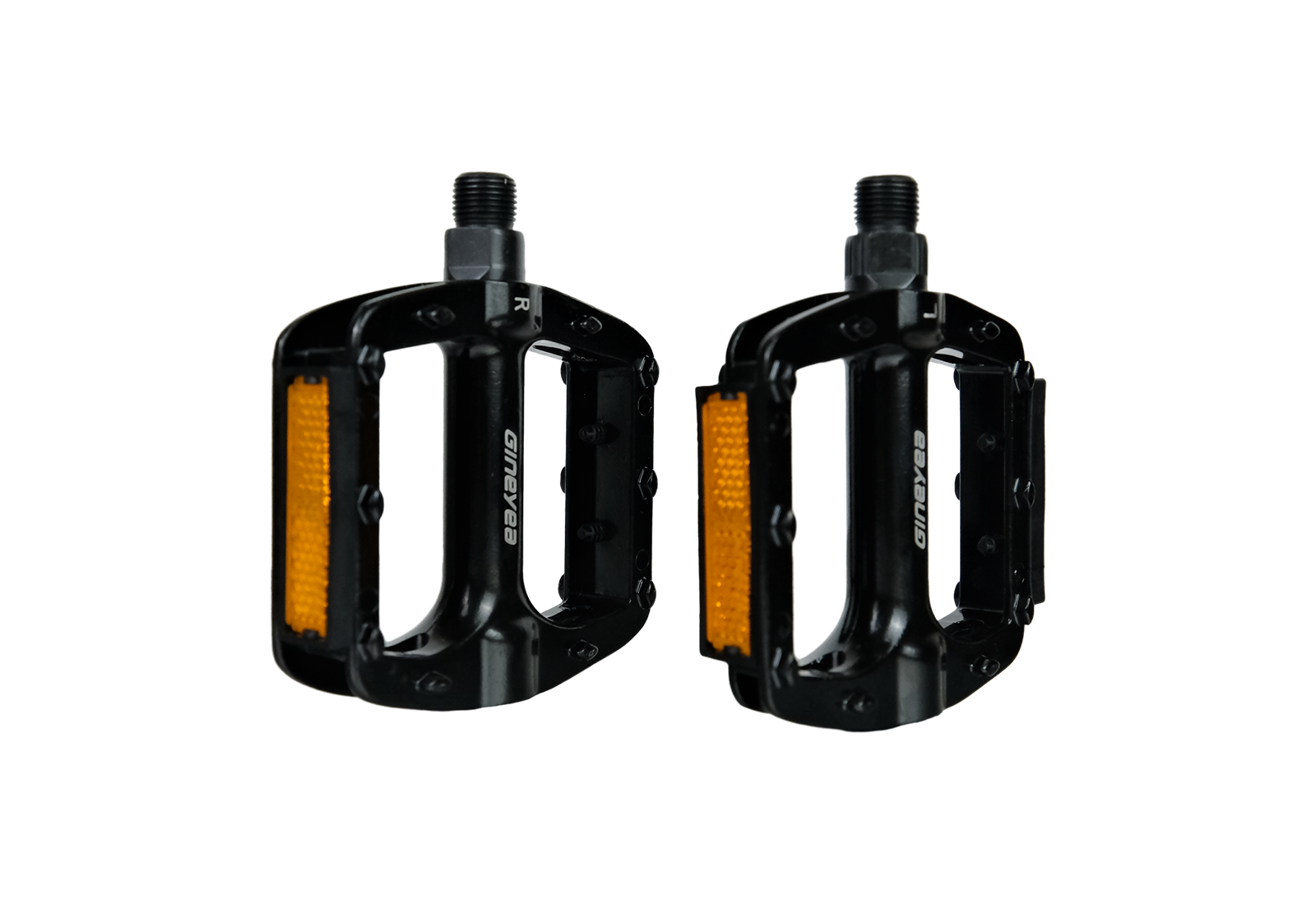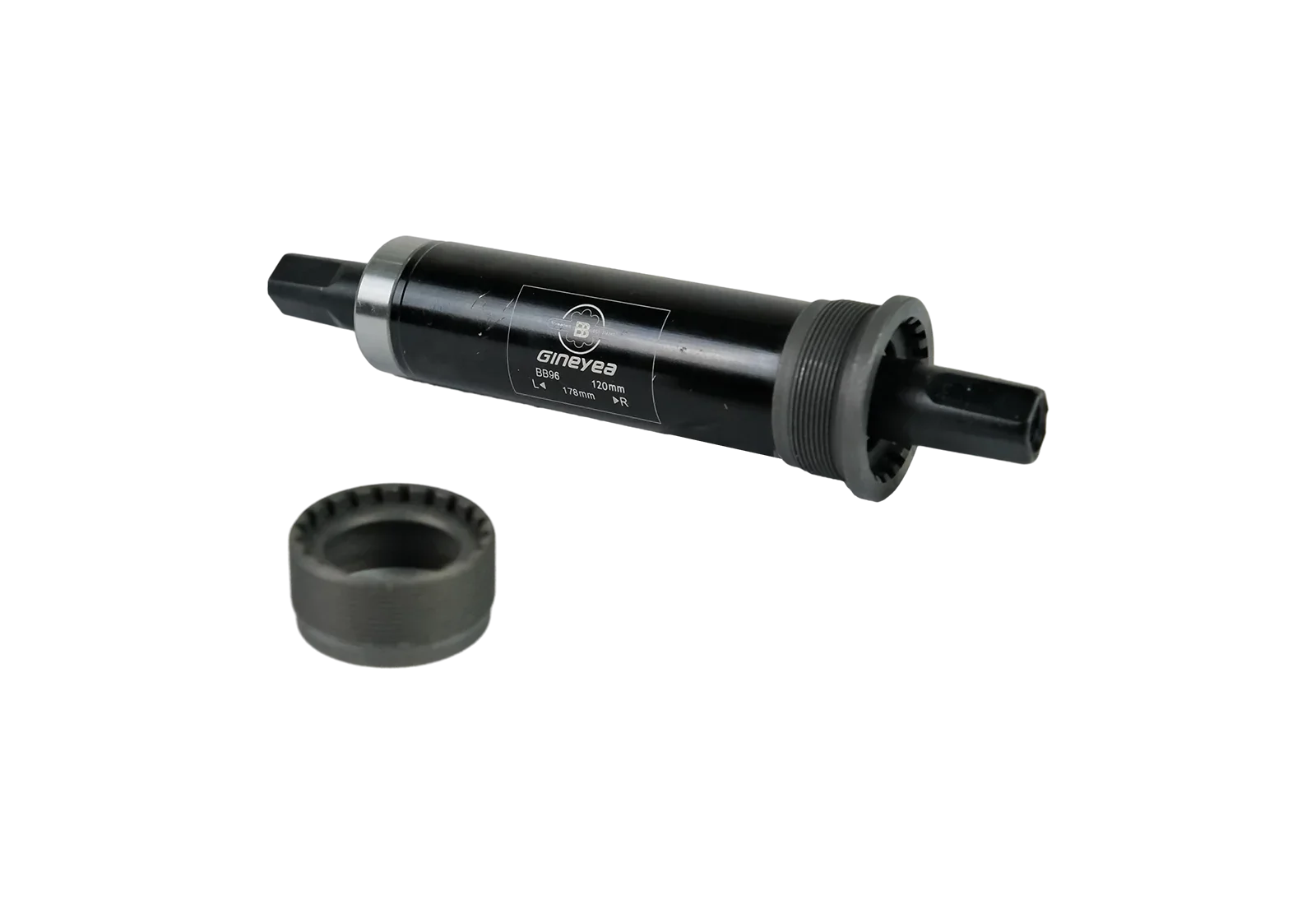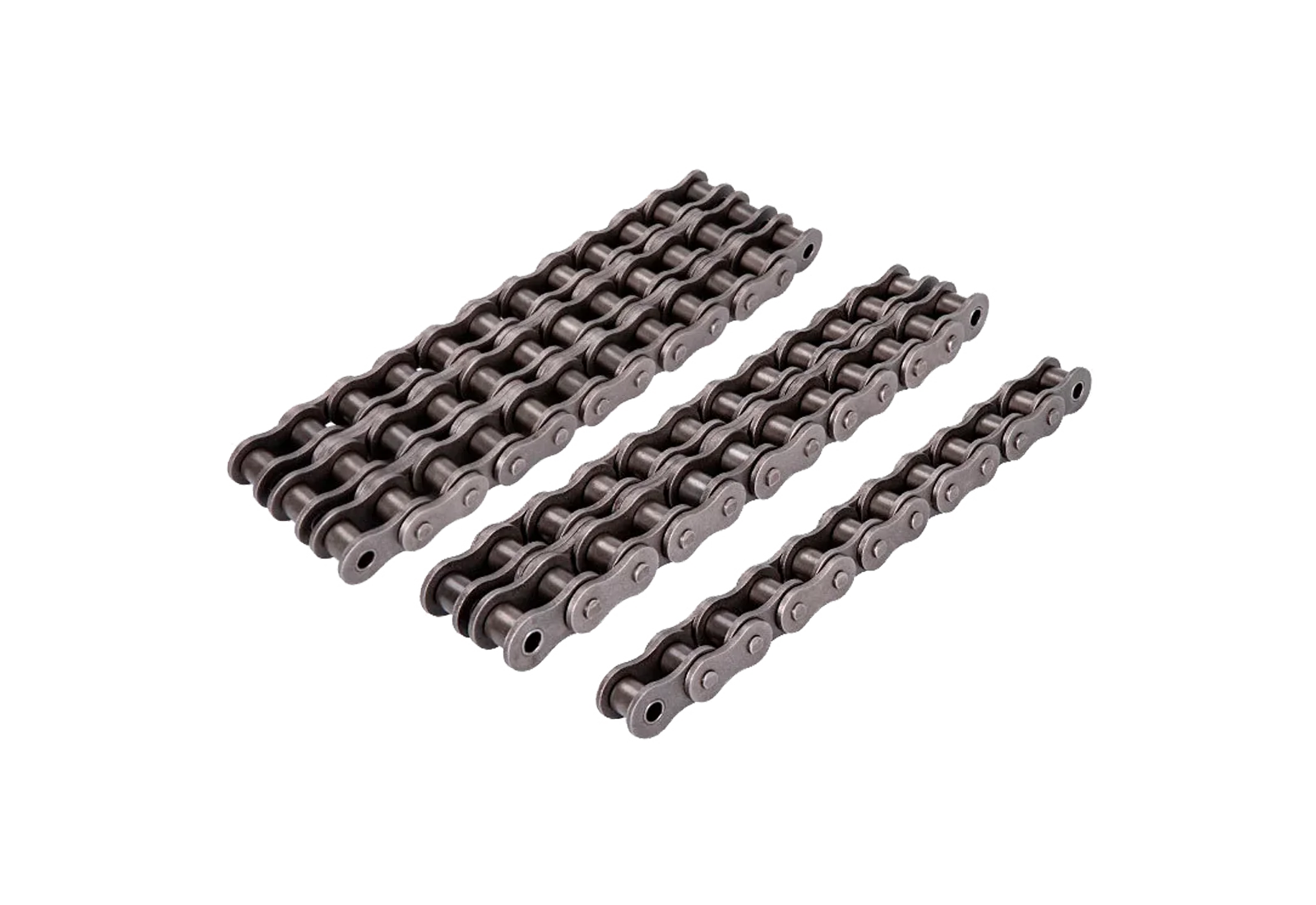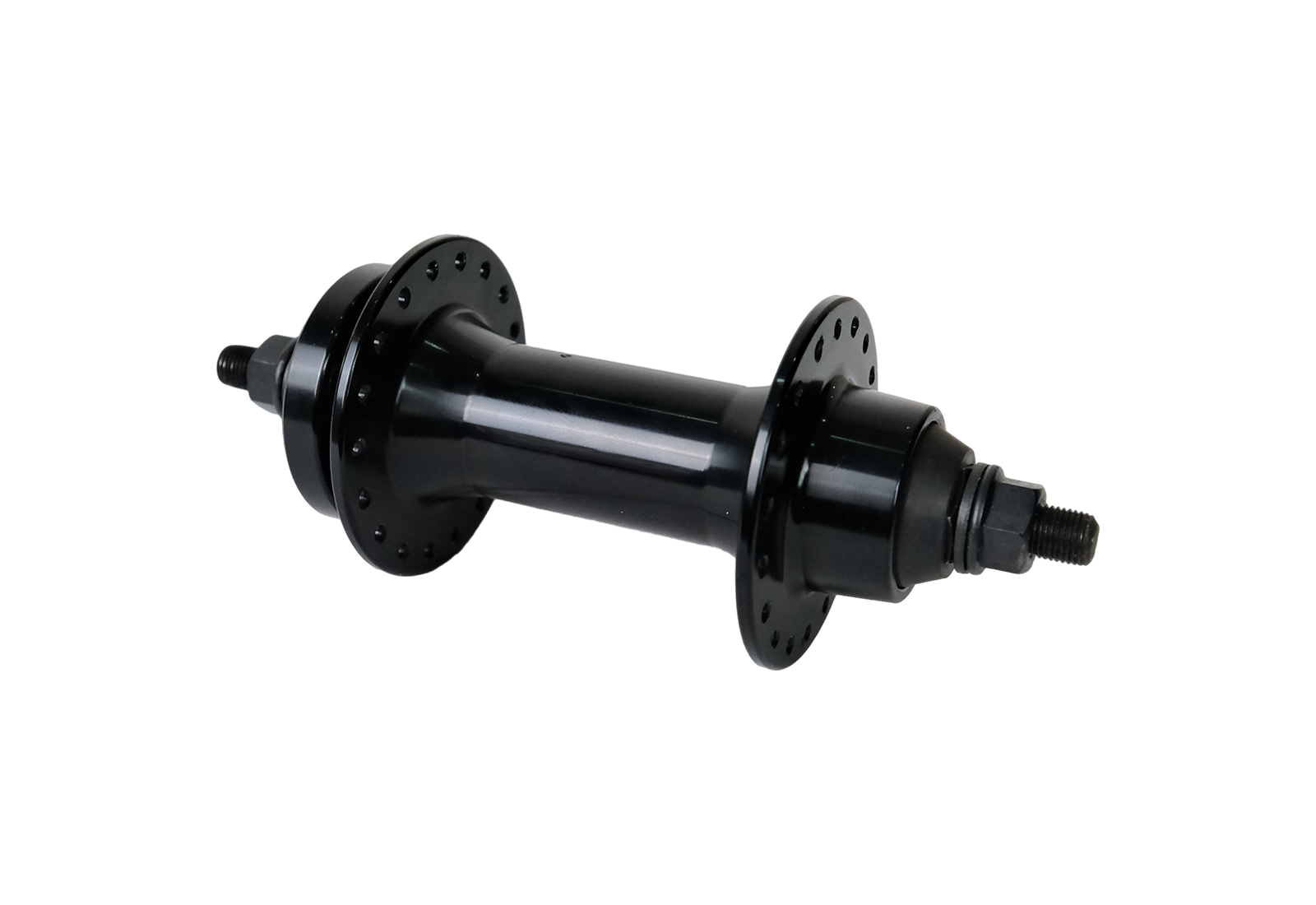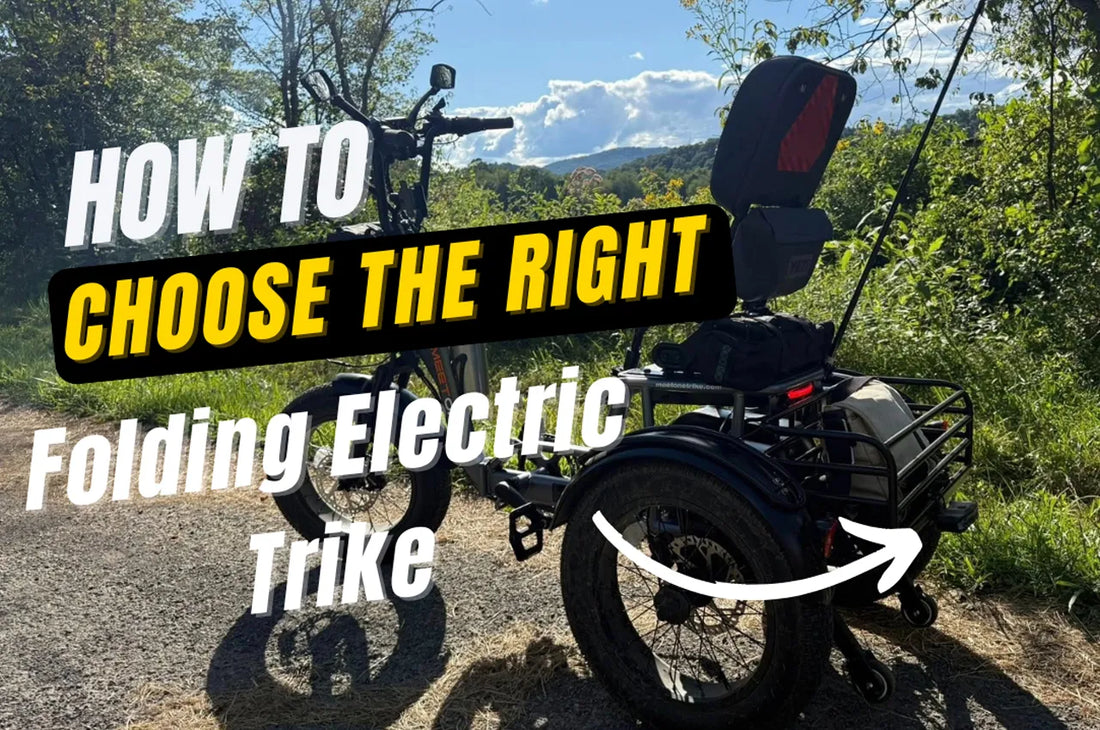
How to Choose the Right Folding Electric Trike
Folding electric trikes combine the stability of three wheels with the convenience of a compact frame. But not all folding trikes are created equal. Once you’ve decided that folding is the right solution for you, the next step is knowing exactly which features to evaluate. This guide walks through the most important criteria so you can choose a folding trike that fits your storage space, riding needs, and budget.
TL;DR
When choosing a folding electric trike, focus on these key features:
Folding Mechanism: Check hinge strength, ease of folding, and lock stability.
Weight: Most weigh 90–120 lbs—make sure you can roll or manage it with ramps.
Folded Size: Confirm it fits your storage space—apartment, garage, or RV.
Battery & Range: Match capacity (15Ah vs. 20Ah+) with your riding distance.
Motor Power: 500–750W is standard; choose higher for hills or heavy loads.
Brakes & Safety: Hydraulic brakes are safer and easier to use, especially for seniors.
Comfort: Look for wide saddles, backrests, and adjustable handlebars for long rides.
👉 Use these factors as your checklist to compare models and pick the folding trike that best matches your space, strength, and riding needs.
Folding Mechanism and Build Quality
The folding joint is the heart of any folding trike. If it is weak or poorly designed, the whole trike becomes unsafe.
- Hinge design: Look for reinforced joints and sturdy locking systems that prevent wobble.
- Ease of folding: Some trikes fold in seconds with one latch, while others require multiple steps.
- Locking stability: Once unfolded, the hinge should feel rigid, with no play in the frame.
- Durability: Metal reinforcements and tested mechanisms ensure long-term reliability.
A high-quality folding mechanism guarantees both convenience and safety. Always check this first.
Weight and Manageability
Folding reduces size but not mass. Folding electric trikes remain heavy machines.
- Typical range: Most weigh 60–100 lbs with battery included.
- Rolling vs. lifting: Many can be rolled when folded, but lifting into a car or up stairs is challenging.
- Accessories: Ramps, carriers, or a second person may be necessary for transport.
- Suitability: Seniors or riders with limited strength should confirm they can manage the weight.
When comparing models, consider whether you can realistically handle its weight in daily use.
Storage Size After Folding
The key advantage of folding trikes is compact storage, so check the folded dimensions carefully.
- Apartment use: Make sure it fits through doorways and hallways.
- Garage storage: Folding allows room for cars, tools, and other bikes.
- RV or van storage: Measure storage bays and confirm the folded size works.
- Shape: Some trikes fold flat, others fold tall—choose what suits your space.
If your storage solution is tight, always compare the actual folded measurements before purchase.
Battery and Range
Battery size defines how far you can ride. Folding does not affect capacity, so evaluate range like any other trike.
- Standard packs: 48V 13–15Ah → 20–40 miles of real-world range.
- Larger packs: 20Ah+ → 40–60 miles or more, depending on terrain.
- Dual-battery readiness: Some folding models accept a second pack for long trips.
- Real-world factors: Rider weight, terrain, and assist level all reduce stated range.
Match your choice to your lifestyle—errands and short rides need less, touring requires more.
Motor Power and Performance
Motor strength determines acceleration and hill-climbing.
- 500W motors: Adequate for flat city streets and light loads.
- 750W motors: Stronger, better for hills and heavier riders.
- Assist sensors: Cadence sensors deliver steady power; torque sensors feel smoother but cost more.
- Top speed: Many folding trikes cap around 20 mph for safety and regulations.
If you live in a hilly area or want extra confidence, a 750W motor is the safer bet.
Brakes and Safety Systems
Braking power is critical because folding trikes remain heavy, and the type and distribution of brakes make a real difference.
- Mechanical disc brakes: Standard in budget models, reliable but require more hand effort.
- Hydraulic disc brakes: Easier to pull, more consistent, safer for seniors.
- Brake distribution: Some trikes use three independent brakes (one per wheel), while others use two brakes (front wheel plus a single rear-axle brake). Three-wheel braking gives better stability and control, especially on uneven terrain.
- Extra safety features: Integrated lights, reflectors, and mirrors improve visibility.
For peace of mind, hydraulic brakes with three-wheel distribution offer the most reliable stopping power, though they add cost.
Comfort and Adjustability
Comfort determines whether you enjoy riding your folding trike regularly.
- Seat design: Wide saddles and backrests provide support for longer rides.
- Handlebars: Adjustable angles and heights adapt to different rider sizes.
- Suspension: Absorbs bumps, improving comfort on uneven surfaces.
- Frame geometry: Low step-through designs make mounting easier.
Test ride if possible—comfort features matter as much as technical specs.
Practical Checklist for Choosing
| Factor | What to Look For |
|---|---|
| Folding Mechanism | Strong hinges, stable locks, easy to use |
| Weight | 90–120 lbs, manageable for your strength |
| Storage Size | Fits your apartment, garage, or RV |
| Battery & Range | 15Ah for errands, 20Ah+ for longer rides |
| Motor Power | 500W for flat roads, 750W for hills/heavy riders |
| Brakes & Safety | Hydraulic preferred for ease and reliability |
| Comfort | Wide seat, backrest, adjustable handlebars |
FAQ
Are folding electric trikes easy to carry?
No. They fold for compact storage but still weigh 60–100 lbs. Carrying upstairs is difficult.
Do folding trikes compromise durability?
Not if built well. Look for reinforced hinges and secure locks to ensure stability.
Can folding trikes fit in a car trunk?
They fit better in SUVs and vans. Sedans often lack the clearance, even when folded.
Conclusion
The right folding electric trike balances storage, weight, features, and budget. Folding solves space problems in apartments, garages, and RVs, but it does not make trikes portable. When choosing, evaluate hinge quality, weight manageability, folded size, battery, motor, brakes, comfort, and overall value. Folding is worth the investment if storage is your main obstacle. With a clear checklist, you can compare models confidently and select the folding trike that truly fits your lifestyle.
Entry-level models like the Breeze ($1,349) deliver dependable comfort at a budget-friendly price, while mid-range upgrades such as the Breeze Pro provide extra braking power and smoother assistance. By understanding your lifestyle needs, you can select the trike that fits your daily rides, storage space, and confidence on the road.
